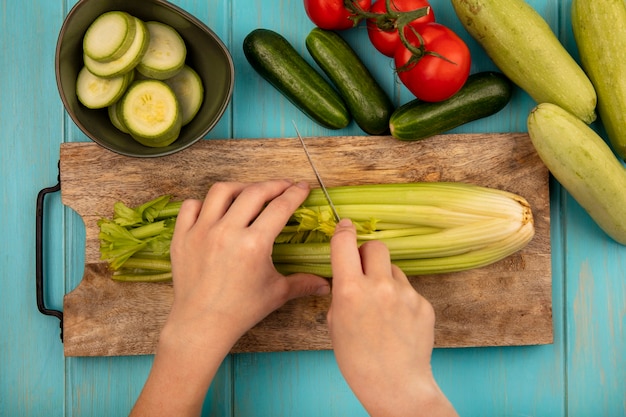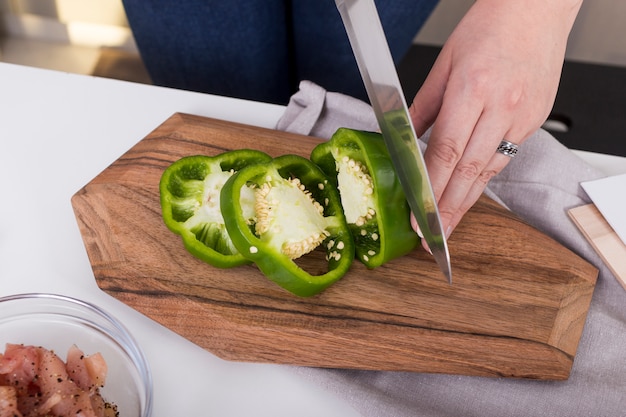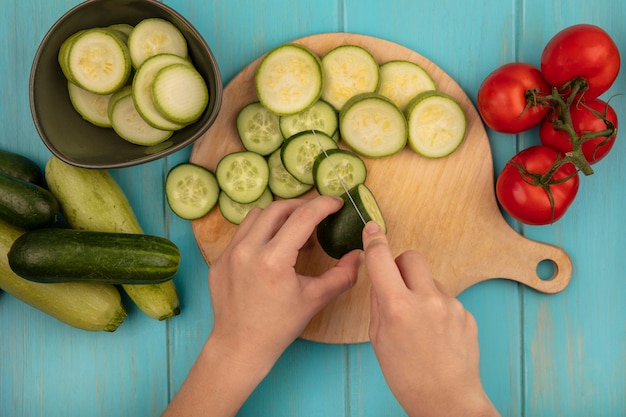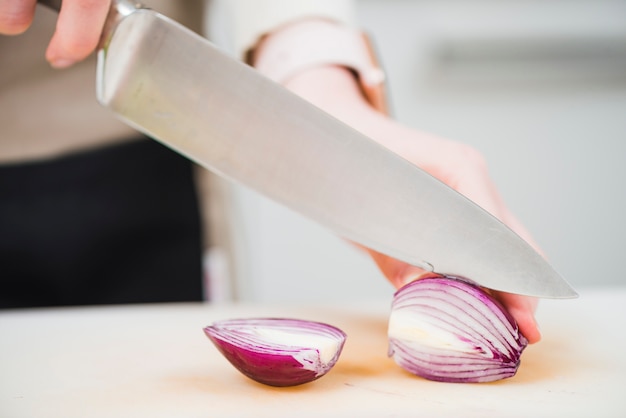Right, let's talk chayote. I'll admit, I wasn't immediately smitten with this funny-looking green fruit. I mean, it looks like a pear and a cucumber had a baby, right? But then, I had it in a stir-fry at a local Asian restaurant, and my taste buds were singing! The flavour was so fresh and delicate, almost like a blend of zucchini and green beans. And it's so versatile! You can cook it in so many ways. So, since then, I've been on a bit of a chayote mission, and I've got a whole bunch of recipes I want to share with you.
(Part 1) What on Earth is Chayote?

Before we dive into the recipes, let's get the basics down. Chayote is actually a fruit, even though most people cook it like a vegetable. It's a native of Mexico and Central America, and it's also known as "mirliton" or "chuchu." You know that saying, "don't judge a book by its cover?" Well, that applies to chayote. It looks a bit like a pear, with a rough, green skin and a pale, fleshy interior. The flavour is mild, slightly sweet, and it's got a lovely, crisp texture. Think of it as a blank canvas for your culinary creativity!
Where Does Chayote Come From?
Chayote's journey from the tropical regions of Mexico and Central America to our kitchens is a fascinating one. It was cultivated by indigenous people for centuries before being introduced to other parts of the world. It's been growing in popularity, especially in Asian cuisine, where it's often used in stir-fries, soups, and stews. Now, it's slowly becoming a regular in many Western kitchens too!
How to Choose the Best Chayote
You've likely seen chayote at your local market or supermarket. But how do you pick the best one? Well, it's pretty straightforward. Look for chayotes that are firm to the touch, with no bruises or soft spots. The skin should be a vibrant green, not dull or yellowing. And if you're feeling adventurous, you can even try one that has a little bit of the stem attached – it's supposed to be the most flavorful part. But don't worry if you can't find one with the stem, you'll still get a delicious chayote.
How to Prepare Chayote
So, you've got your chayote, what next? First, you'll want to give it a good wash. Then, you can either peel it or leave the skin on. If you're peeling it, use a vegetable peeler and peel it like you would a potato. Then, cut it into chunks or slices, depending on the recipe. If you're leaving the skin on, you'll need to scrub it with a vegetable brush to remove any dirt or debris. And before you cook it, you can even remove the seeds, but they are edible and add a bit of crunch. If you're using the chayote in a stir-fry, you can just slice it into thin wedges. But, if you're making a soup, you might want to chop it into smaller pieces. Easy peasy, right?
(Part 2) Simple Chayote Recipes: For the Busy Cook

Okay, now let's get to the good stuff – the recipes! I've got a few simple ones that are perfect for weeknight dinners. These are easy, delicious, and don't require a lot of ingredients. They're great for those nights when you're feeling a bit tired but still want something healthy and tasty.
1. Chayote and Garlic Stir-Fry
This is my go-to for a quick and easy weeknight meal. Just throw together some chayote, garlic, and your favourite seasonings. You can even add some other veggies like bell peppers or mushrooms, if you like.
Ingredients:
- 1 medium chayote, peeled and diced
- 2 cloves garlic, minced
- 1 tablespoon olive oil
- Salt and pepper, to taste
- 1 tablespoon soy sauce (optional)
Instructions:
- Heat the olive oil in a large skillet or wok over medium heat.
- Add the garlic and cook for about 30 seconds, until fragrant.
- Add the chayote and cook for about 5 minutes, until tender-crisp.
- Season with salt, pepper, and soy sauce (if using). Serve immediately.
Tip: For a more flavorful dish, try adding a splash of sesame oil to the pan before adding the chayote.
2. Chayote Salad with Avocado and Lime
This salad is light and refreshing, perfect for a summer lunch or dinner. The creamy avocado and tangy lime juice complement the chayote perfectly. And you can add other toppings, like tomatoes, cilantro, or toasted almonds, to make it even more interesting.
Ingredients:
- 1 medium chayote, peeled and diced
- 1 avocado, diced
- Juice of 1 lime
- Salt and pepper, to taste
- Cilantro, chopped (optional)
- Toasted almonds (optional)
Instructions:
- Combine the chayote, avocado, lime juice, salt, and pepper in a bowl.
- Toss to combine.
- Serve immediately, topped with cilantro and toasted almonds if desired.
Tip: For a little extra flavour, try adding a teaspoon of honey or maple syrup to the salad dressing.
3. Chayote and Corn Soup
This soup is creamy and comforting, perfect for a chilly evening. It's also a great way to use up leftover corn on the cob. You can even add some diced tomatoes or a splash of cream for extra flavour.
Ingredients:
- 1 medium chayote, peeled and diced
- 1 ear corn, kernels removed
- 1 onion, chopped
- 4 cups vegetable broth
- Salt and pepper, to taste
- Diced tomatoes (optional)
- Cream (optional)
Instructions:
- In a large pot, combine the chayote, corn, onion, and vegetable broth.
- Bring to a boil, then reduce heat and simmer for 15 minutes, until the chayote is tender.
- Season with salt and pepper to taste.
- Using an immersion blender, blend the soup until smooth.
- Serve hot, garnished with diced tomatoes and a dollop of cream if desired.
Tip: For a thicker soup, add a tablespoon of cornstarch to the soup and stir until it thickens.
(Part 3) More Creative Chayote Recipes

Okay, so you've mastered the basics, now let's get a little bit more adventurous. There are so many other ways to cook chayote, and these next few recipes will show you some of my favourites.
1. Chayote Fritters
These little fritters are super tasty and perfect as a snack, side dish, or even a light lunch. They're crispy on the outside and soft on the inside, with a hint of sweetness from the chayote. And you can get creative with the toppings – try some spicy mayo, a squeeze of lime, or even a dollop of sour cream.
Ingredients:
- 1 medium chayote, peeled and grated
- 1/2 cup all-purpose flour
- 1/2 teaspoon baking powder
- 1/4 teaspoon salt
- 1 egg, beaten
- 1/4 cup milk
- vegetable oil, for frying
Instructions:
- In a large bowl, combine the grated chayote, flour, baking powder, and salt.
- In a separate bowl, whisk together the egg and milk.
- Add the egg mixture to the chayote mixture and stir until just combined.
- Heat the vegetable oil in a large skillet over medium heat.
- Drop spoonfuls of the batter into the hot oil and cook for about 2 minutes per side, until golden brown.
- Remove from the oil and drain on paper towels. Serve immediately, with your favourite toppings.
Tip: For extra flavour, add some finely chopped herbs like chives or parsley to the batter before frying.
2. Chayote and Chicken Curry
This curry is rich and fragrant, with a hint of sweetness from the chayote. It's a great option for a satisfying and flavorful meal. The chayote adds a lovely texture and the mild flavour doesn't overpower the other ingredients.
Ingredients:
- 1 tablespoon vegetable oil
- 1 onion, chopped
- 2 cloves garlic, minced
- 1 inch ginger, grated
- 1 teaspoon curry powder
- 1/2 teaspoon turmeric powder
- 1/4 teaspoon cayenne pepper (optional)
- 1 (14-ounce) can coconut milk
- 1 medium chayote, peeled and diced
- 1 cup cooked chicken, shredded
- Salt and pepper, to taste
- Chopped cilantro, for garnish (optional)
Instructions:
- Heat the vegetable oil in a large pot over medium heat.
- Add the onion, garlic, and ginger and cook for about 5 minutes, until softened.
- Stir in the curry powder, turmeric, and cayenne pepper (if using) and cook for 1 minute, until fragrant.
- Pour in the coconut milk and bring to a simmer.
- Add the chayote and chicken and cook for about 10 minutes, until the chayote is tender.
- Season with salt and pepper to taste. Serve hot, garnished with chopped cilantro if desired.
Tip: For a spicier curry, add a pinch of red pepper flakes to the sauce.
3. Stuffed Chayote
This is a fun and creative way to use chayote. You can stuff it with anything you like – ground meat, vegetables, cheese, or even a mixture of all of them! It's a delicious and impressive dish that's sure to impress your guests.
Ingredients:
- 2 medium chayotes
- 1/2 cup ground beef or sausage
- 1/2 cup chopped onion
- 1/2 cup chopped bell pepper
- 1/4 cup chopped tomato
- 1/4 cup grated cheese (your choice)
- Salt and pepper, to taste
Instructions:
- Preheat oven to 375 degrees Fahrenheit (190 degrees Celsius).
- Cut the top off of the chayotes and scoop out the seeds and flesh, leaving a hollow in the center.
- In a large skillet, brown the ground beef or sausage over medium heat.
- Add the onion, bell pepper, and tomato and cook until softened, about 5 minutes.
- Season with salt and pepper to taste.
- Stuff the chayote halves with the meat mixture and sprinkle with cheese.
- Place the stuffed chayotes in a baking dish and bake for 30 minutes, or until the chayotes are tender and the cheese is melted and bubbly.
Tip: For a vegetarian option, use a mixture of lentils, quinoa, and chopped vegetables for the filling.
(Part 4) Chayote for Dessert? Yes, Please!
You might be surprised to hear this, but chayote can actually be used in desserts! It's got a slightly sweet flavour that works well with other sweet ingredients. Plus, it's low in calories and high in fibre, so you can feel good about indulging in these delicious treats.
1. Chayote and Coconut Pudding
This pudding is light and creamy, with a hint of coconut flavour. It's a perfect end to a meal, or a refreshing snack. You can even add some chopped fruits or nuts for extra texture and flavour.
Ingredients:
- 1 medium chayote, peeled and diced
- 1 (14-ounce) can coconut milk
- 1/4 cup sugar
- 1 teaspoon vanilla extract
- Pinch of salt
- Chopped fruits or nuts (optional)
Instructions:
- In a saucepan, combine the chayote, coconut milk, sugar, vanilla extract, and salt.
- Bring to a boil, then reduce heat and simmer for about 15 minutes, until the chayote is tender.
- Using an immersion blender, blend the pudding until smooth.
- Serve warm or chilled, topped with chopped fruits or nuts if desired.
Tip: For a richer flavour, use full-fat coconut milk.
2. Chayote and Ginger Jam
This jam is tangy and spicy, with a hint of sweetness from the chayote. It's perfect for spreading on toast, crackers, or even using as a glaze for chicken or fish. The ginger adds a warm and earthy flavour that complements the chayote nicely.
Ingredients:
- 1 medium chayote, peeled and diced
- 1 cup sugar
- 1/2 cup water
- 1 inch ginger, grated
- 1/4 cup lemon juice
Instructions:
- In a large saucepan, combine the chayote, sugar, water, ginger, and lemon juice.
- Bring to a boil, then reduce heat and simmer for about 30 minutes, stirring occasionally, until the jam thickens.
- Remove from heat and let cool slightly.
- Pour into sterilized jars and seal tightly. Store in the refrigerator for up to 2 weeks.
Tip: For a less spicy jam, reduce the amount of ginger used.
(Part 5) Chayote Benefits: More Than Just Tasty!
Okay, so chayote is delicious, versatile, and easy to cook. But it's also packed with nutrients that can benefit your health. It's a good source of vitamins, minerals, and antioxidants, and it's also low in calories and fat. Here are a few of the health benefits of chayote:
1. Rich in Vitamins and Minerals
Chayote is a good source of several vitamins and minerals, including vitamin C, potassium, and folate. Vitamin C is an important antioxidant that helps to protect your cells from damage. Potassium is essential for maintaining healthy blood pressure, and folate is crucial for cell growth and development.
2. Low in Calories and Fat
Chayote is a low-calorie and low-fat food, making it a good choice for those watching their weight. It's also a good source of fibre, which can help you feel full and satisfied, making it easier to stick to your diet.
3. May Help Lower Blood Pressure
The potassium in chayote can help to lower blood pressure. Potassium helps to relax the blood vessels, which allows blood to flow more easily. This can help to reduce the strain on your heart and reduce your risk of heart disease.
4. May Help Control Blood Sugar
Chayote is a good source of fibre, which can help to control blood sugar levels. Fibre slows down the absorption of sugar into the bloodstream, which helps to prevent spikes in blood sugar levels. This is especially beneficial for people with diabetes or those at risk of developing diabetes.
5. May Improve Digestion
The fibre in chayote can also help to improve digestion. Fibre adds bulk to your stool, which helps to move waste through your digestive tract more efficiently. This can help to prevent constipation and other digestive problems.
(Part 6) cooking tips and Tricks
Now, you've got a good understanding of what chayote is, and you're ready to try some recipes. But here are a few tips and tricks to help you get the most out of this versatile vegetable.
1. Don't Overcook It
Chayote has a delicate texture that can easily become mushy if you overcook it. The goal is to cook it until it's tender-crisp, but not soft. You can test for doneness by piercing the chayote with a fork. If it goes through easily, it's ready.
2. Season It Well
Chayote has a mild flavour, so it's important to season it well to bring out its best qualities. You can use salt, pepper, herbs, spices, or even citrus juice. Experiment with different seasonings to find your favourite combinations.
3. Use It in Different Dishes
Chayote is so versatile, you can use it in all sorts of dishes. Try it in stir-fries, salads, soups, stews, curries, fritters, and even desserts! The possibilities are endless.
4. Don't Throw Away the Skin
The skin of the chayote is edible, although it can be a bit tough. You can eat it if you like, but most people prefer to peel it off. If you're peeling it, don't throw the skin away! It can be used to make a delicious stock or broth.
Tip: For a flavorful stock, simmer the chayote skin with onions, carrots, celery, and herbs for about 30 minutes.
(Part 7) Where to Buy Chayote
You might be wondering, "Where can I find this amazing fruit?" Well, it's getting more and more popular, so you might be able to find it at your local supermarket. Look in the produce section, usually near the other exotic fruits and vegetables. If you can't find it there, you can also try Asian markets or specialty grocery stores.
(Part 8) Storing Chayote
Once you've got your hands on some chayote, you'll want to store it properly to keep it fresh. The best way to store chayote is in a cool, dry place, like a pantry or refrigerator. Avoid storing it near fruits that give off ethylene gas, like bananas or apples. This can cause the chayote to ripen too quickly and become mushy. Chayote can last for up to a week if stored properly.
(Part 9) Chayote FAQ
I know you've got questions, so here are some answers to the most common ones.
1. What does chayote taste like?
Chayote has a mild flavour that's slightly sweet and refreshing. Some people say it tastes like a cross between zucchini and green beans. It's not very strong, so it's easy to pair with other flavours.
2. Is chayote good for you?
Absolutely! Chayote is packed with nutrients that are good for your health. It's a good source of vitamins, minerals, and antioxidants, and it's also low in calories and fat.
3. How do you prepare chayote?
You can either peel chayote or leave the skin on. If you're peeling it, use a vegetable peeler and peel it like you would a potato. If you're leaving the skin on, you'll need to scrub it with a vegetable brush to remove any dirt or debris. Then, cut it into chunks or slices, depending on the recipe.
4. What are some good chayote recipes?
I've shared a bunch of recipes in this article, but there are endless possibilities! Try chayote in stir-fries, salads, soups, stews, curries, fritters, and even desserts.
5. Where can I buy chayote?
You can find chayote at your local supermarket, Asian markets, or specialty grocery stores. Look for chayotes that are firm to the touch, with no bruises or soft spots.
So there you have it – everything you need to know about chayote! Now, go forth and get creative with this versatile vegetable. I promise, you won't be disappointed.
Everyone is watching

The Ultimate Guide to Cooking Sweet Potatoes: From Roasting to Mashing
RecipesSweet potatoes. Just the name conjures up images of warm, comforting dishes, bursts of vibrant color, and a to...

Caramelized Onions: The Ultimate Guide to Sweet, Savory Perfection
RecipesAh, caramelized onions. Those gloriously sweet, sticky, and utterly addictive little gems. They're the culinar...

Ultimate Turkey Cooking Time Guide: From Raw to Perfectly Roasted
RecipesAh, the turkey. A symbol of festive gatherings, a culinary challenge, and a source of delicious leftovers. But...

Wolf Meat Recipes: A Guide to Cooking Wild Game
RecipesLet's be honest, you don't see wolf meat at your local butcher shop every day. It's a bit of a wild card, but ...

Pigs in a Blanket Cooking Time: How Long to Bake for Perfect Results
RecipesAh, pigs in a blanket. Just the name conjures up images of those delightful little parcels of crispy pastry en...
